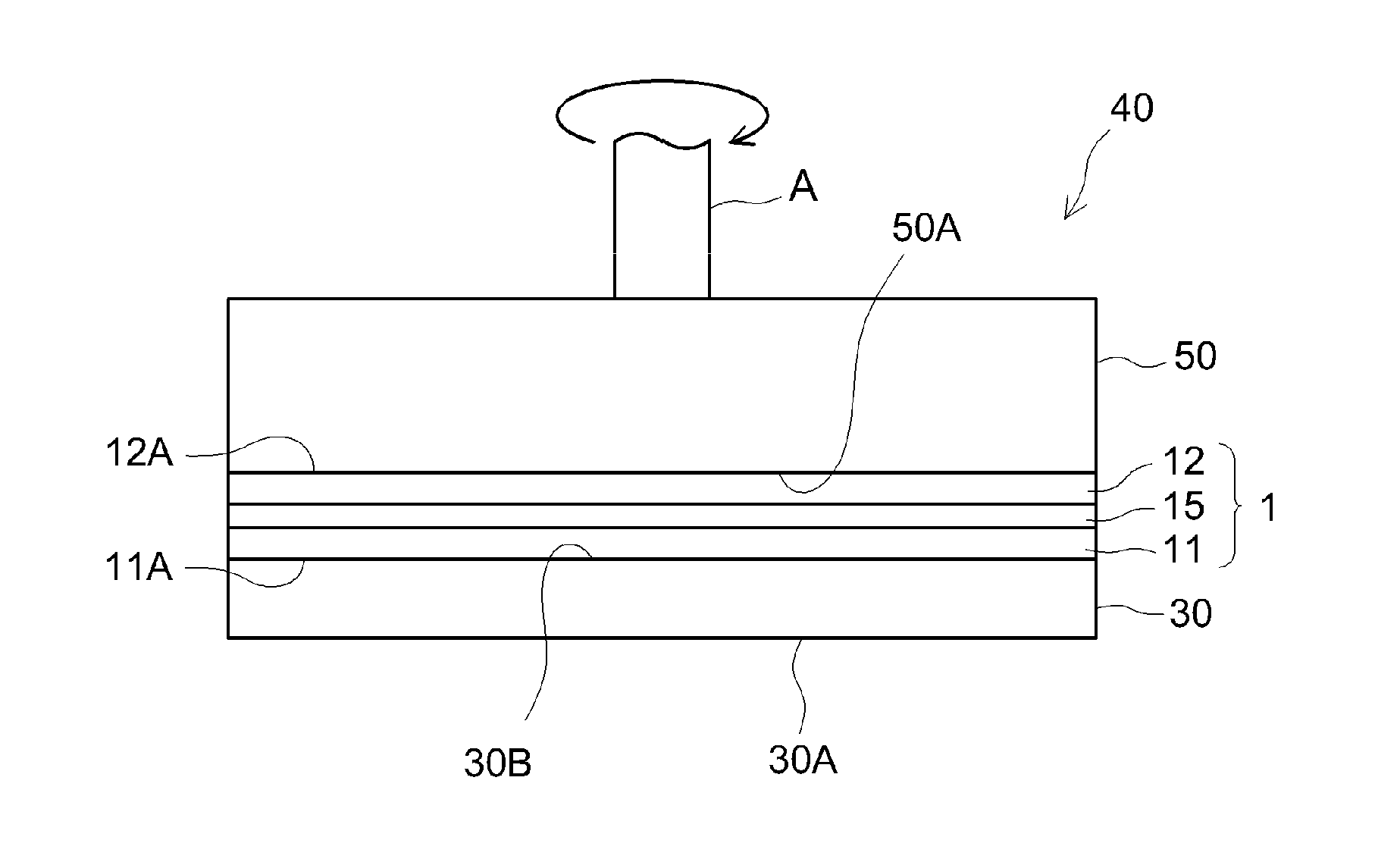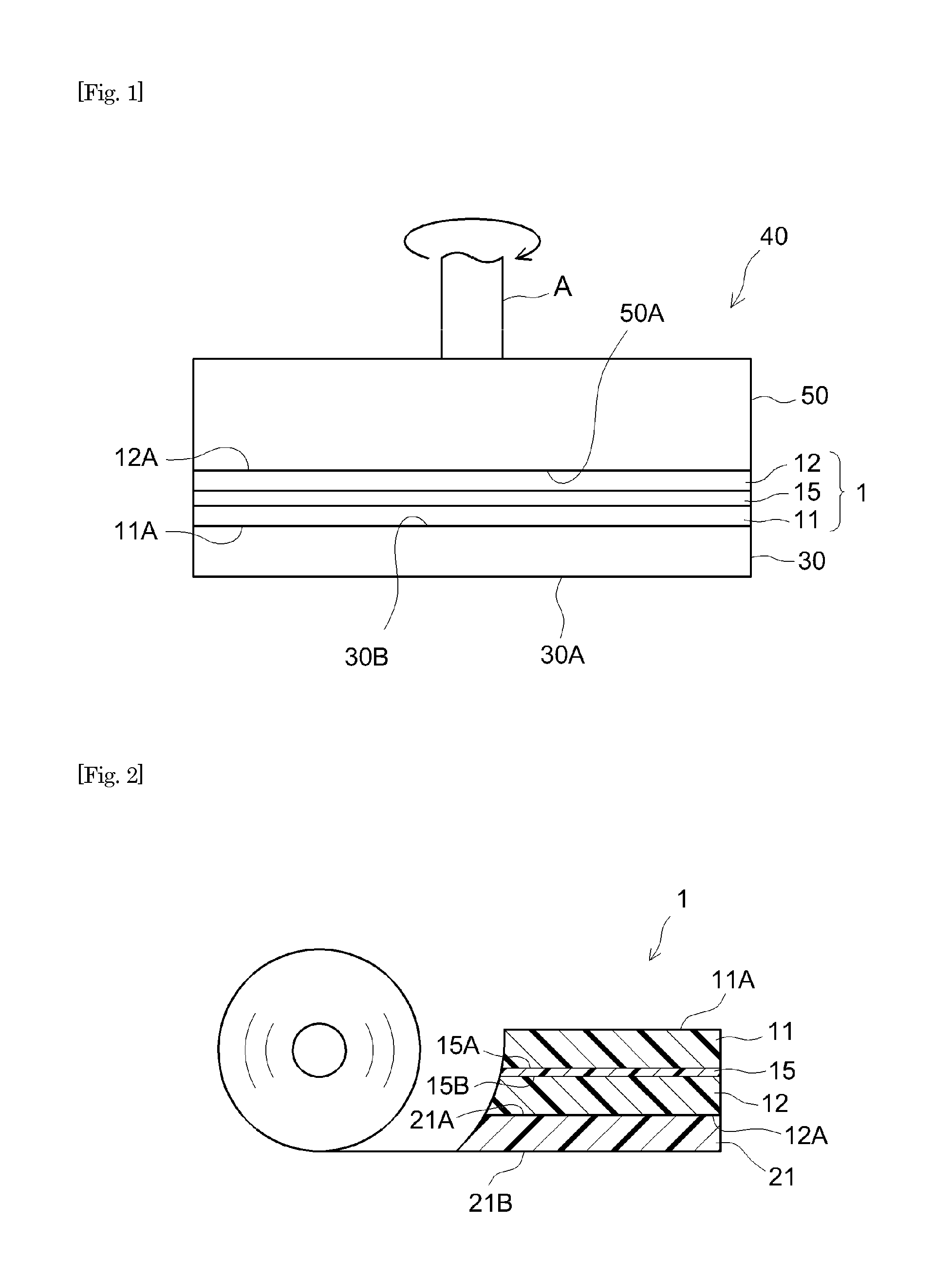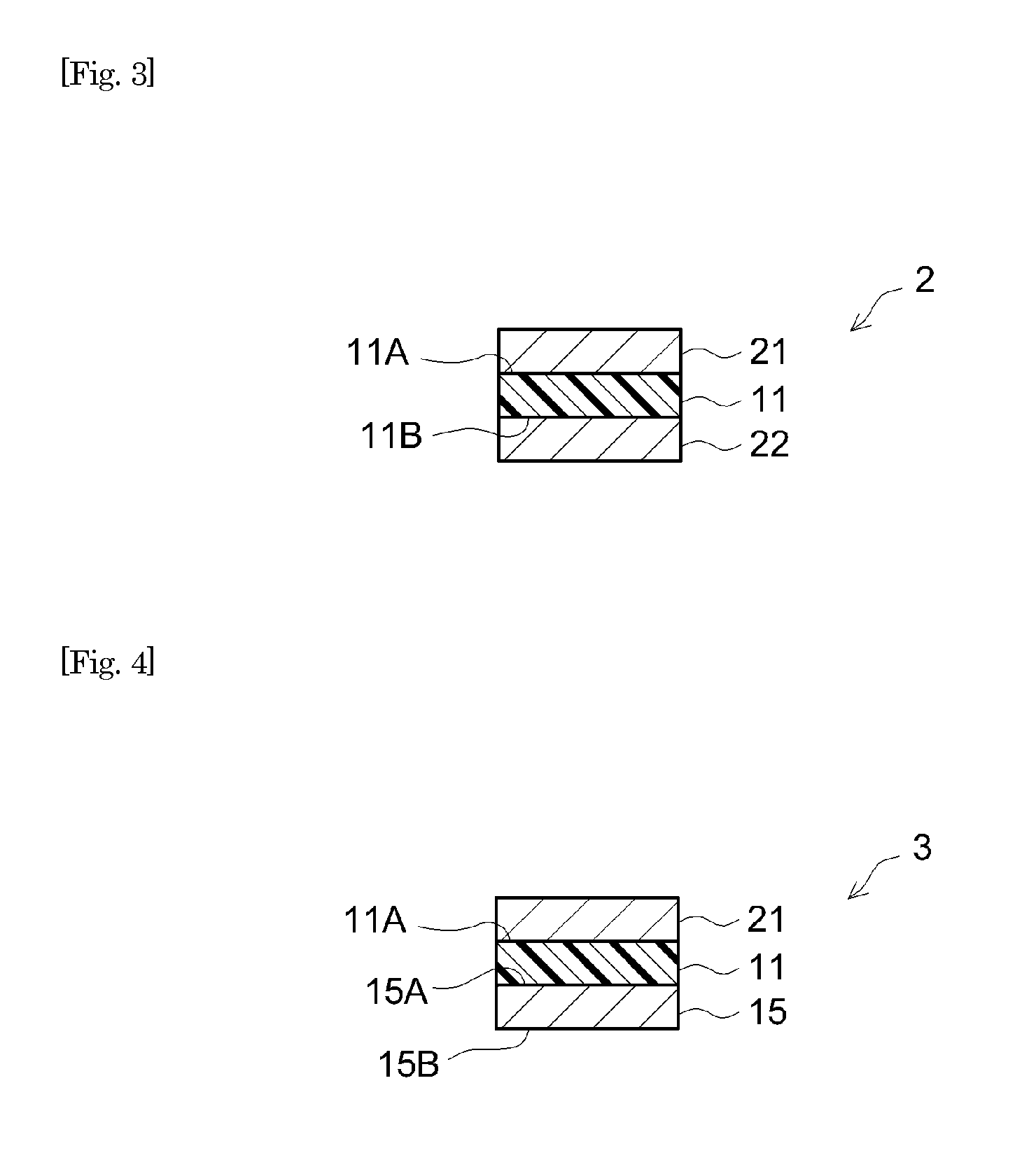Pressure-sensitive adhesive sheet for fastening polishing pad
a technology of pressure-sensitive adhesives and polishing pads, which is applied in the direction of film/foil adhesives, manufacturing tools, lapping machines, etc., can solve the problems that conventional psa sheets cannot bring about sufficient adhesive strength, and achieve the effects of reducing cost, increasing productivity, and ensuring adhesive strength
- Summary
- Abstract
- Description
- Claims
- Application Information
AI Technical Summary
Benefits of technology
Problems solved by technology
Method used
Image
Examples
example 1
Preparation of Rubber-Based PSA Composition
[0117]100 parts of a styrene-isoprene block copolymer (available from Zeon Corporation, product name “QUINTAC 3520”, 15% styrene content, 78% diblock fraction) as a base polymer, 40 parts of a terpene phenol resin, 30 parts of a terpene resin, 0.75 part by solid content of an isocyanate compound (available from Nippon Polyurethane Industry Co., Ltd., trade name “CORONATE L”), 3 parts of an anti-aging agent, and toluene as a solvent were mixed with stirring to prepare a rubber-based PSA composition A at 50% NV.
[0118]Herein, as the terpene phenol resin, two species, namely, trade name “YS POLYSTAR 5145” (softening point 145° C., hydroxyl value 100 mgKOH / g) and trade name “YS POLYSTAR T145” (softening point 145° C., hydroxyl value 60 mgKOH / g) both available from Yasuhara Chemical Co., Ltd., were used at a mass ratio of 1:1 in a combined amount of 40 parts. As for the terpene resin, was used product name “YS RESIN PX1150N” (softening point 115°...
example 2
[0121]In the same manner as Example 1 except that the thickness of the first PSA layer was modified to 60 μm, a double-faced PSA sheet according to Example 2 was fabricated.
example 3
Preparation of Acrylic PSA Composition B
[0122]Into a three-neck flask, were placed 70 parts of butyl acrylate, 30 parts of 2-ethylhexyl acrylate, 3 parts of acrylic acid, 0.05 part of 4-hydroxybutyl acrylate and 152 parts of toluene as a polymerization solvent. Under a nitrogen flow, the resulting mixture was let stir for 2 hours to remove oxygen from the polymerization system. 0.08 part of 2,2′-azobisisobutylonitrile (AIBN) was then added. The mixture was heated to 60° C. and polymerization reaction was carried out for 6 hours. A polymer solution (an acrylic polymer B solution in toluene) was thus obtained. To the polymer solution, relative to 100 parts of the non-volatiles, were added 30 parts of a tackifier resin (a polymerized rosin under trade name “PENSEL D125” available from Arakawa Chemical Industries, Ltd.), 2 parts of an isocyanate-based crosslinking agent (available from Nippon Polyurethane Industry Co., Ltd., trade name “CORONATE L”) and a suitable amount of a polymeriza...
PUM
| Property | Measurement | Unit |
|---|---|---|
| Angle | aaaaa | aaaaa |
| Energy | aaaaa | aaaaa |
| Softening point | aaaaa | aaaaa |
Abstract
Description
Claims
Application Information
 Login to View More
Login to View More - R&D
- Intellectual Property
- Life Sciences
- Materials
- Tech Scout
- Unparalleled Data Quality
- Higher Quality Content
- 60% Fewer Hallucinations
Browse by: Latest US Patents, China's latest patents, Technical Efficacy Thesaurus, Application Domain, Technology Topic, Popular Technical Reports.
© 2025 PatSnap. All rights reserved.Legal|Privacy policy|Modern Slavery Act Transparency Statement|Sitemap|About US| Contact US: help@patsnap.com



